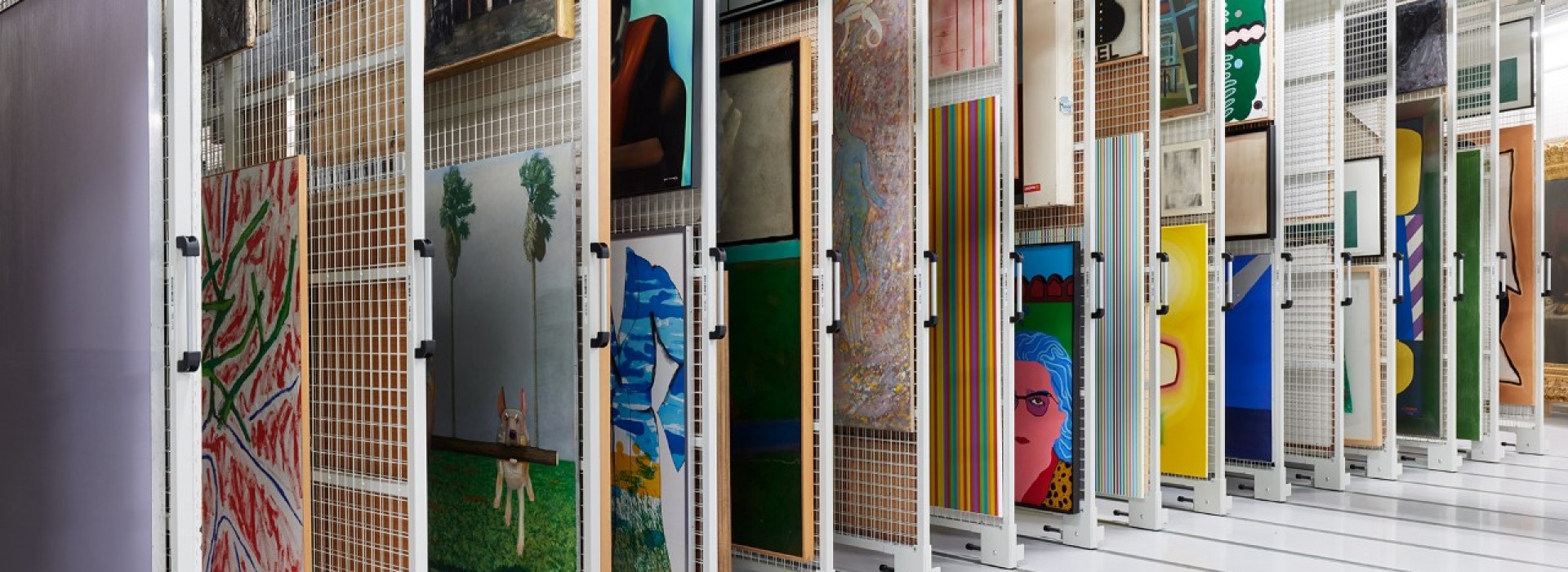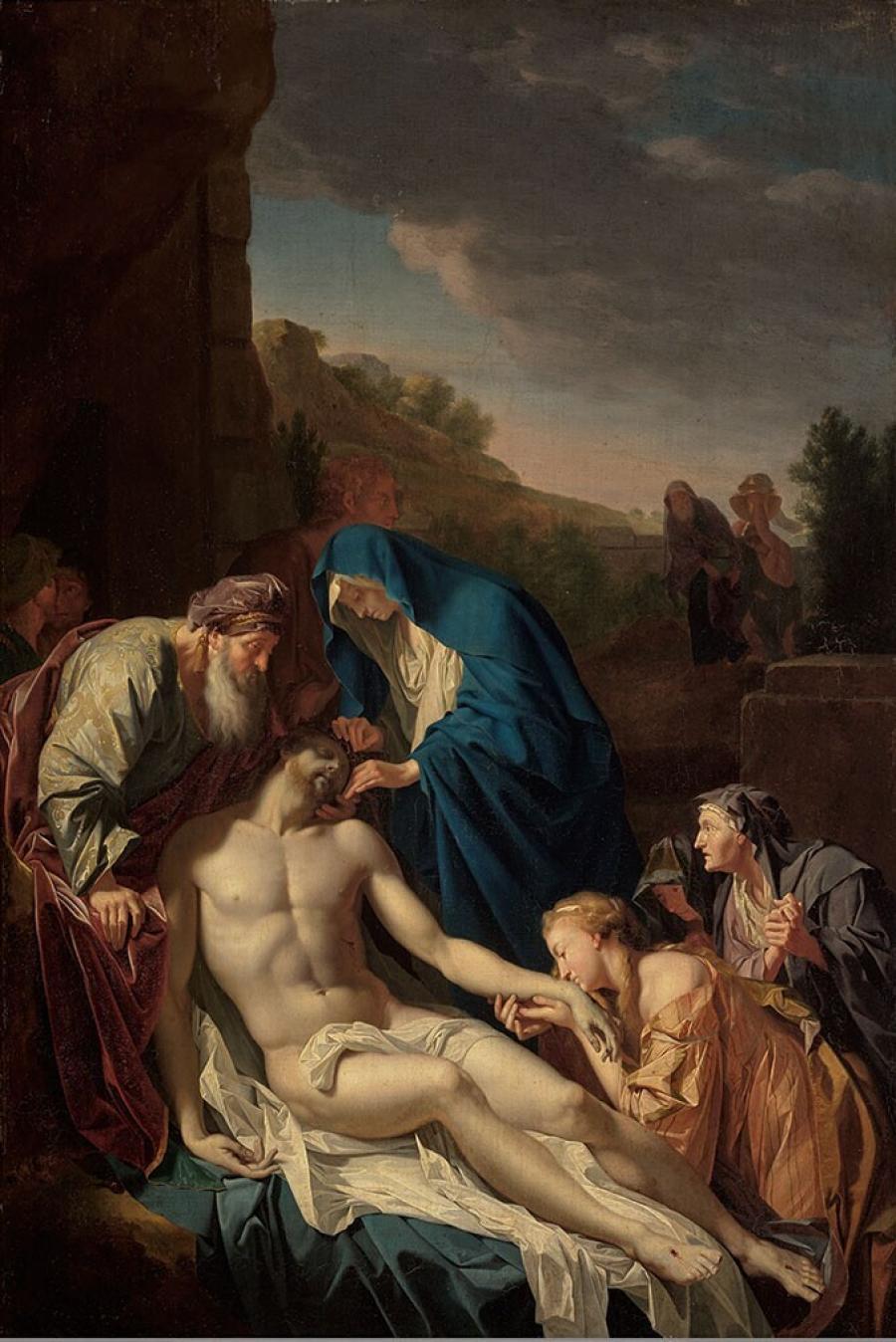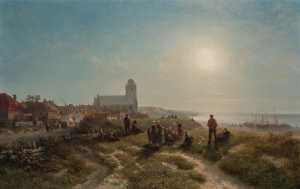After Christ’s crucifixion, Matthew writes: ‘As evening approached, there came a rich man from Arimathea, named Joseph, who had himself become a disciple of Jesus. Going to Pilate, he asked for Jesus’ body. Pilate ordered that it be given to him. Joseph took the body, wrapped it in a clean linen cloth, and placed it in his own new tomb that he had cut out of the rock. He rolled a big stone in front of the entrance to the tomb and went away.’ (Matthew 27:57-60) Van ded Werff depicted the dead Christ as an ideal nude. He is laying in the arms of Joseph of Arimathea and surrounded by a number of women including Mary Magdalene, the woman holding Jesus’ arm. Left in the background is the entrance to the tomb. Two figures are approaching on the right.

Specifications
| Title | The entombment of Christ |
|---|---|
| Material and technique | Oil on canvas on panel |
| Object type |
Painting
> Painting
> Two-dimensional object
> Art object
|
| Location | This object is in storage |
| Dimensions |
Width 54,5 cm Height 81,5 cm |
|---|---|
| Artists |
Painter:
Pieter van der Werff
Previously attributed: Adriaen van der Werff |
| Accession number | 1967 (OK) |
| Credits | Purchased 1869 |
| Department | Old Masters |
| Acquisition date | 1869 |
| Creation date | in circa 1706-1722 |
| Material | |
| Object | |
| Geographical origin | Northern Netherlands > The Netherlands > Western Europe > Europe |
Do you have corrections or additional information about this work? Please, send us a message
























